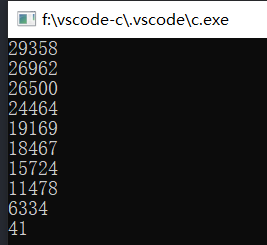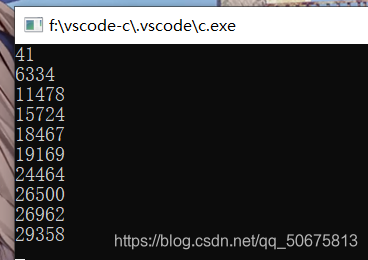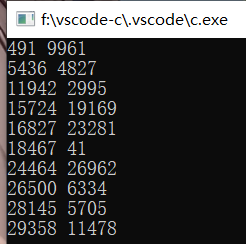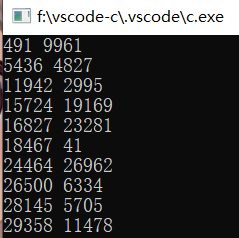优先队列详解/C++
优先队列
1.概念:什么是优先队列呢?在优先队列中,元素被赋予优先级,当访问元素时,具有最高级优先级的元素先被访问 .即优先队列具有最高级先出的行为特征。它可以说是队列和排序的完美结合体,不仅可以存储数据,还可以将这些数据按照我们设定的规则进行排序。
2.定义:优先队列在头文件#include 中;其声明格式为:priority_queue ans;//声明一个名为ans的整形的优先队列
3.支持的操作:
q.empty() //如果队列为空,则返回true,否则返回false
q.size() //返回队列中元素的个数
q.pop() //删除队首元素,但不返回其值
q.top() //返回具有最高优先级的元素值,但不删除该元素
q.push(item) //在基于优先级的适当位置插入新元素
4实例:
优先队列的时间复杂度为O(logn),n为队列中元素的个数,其存取都需要时间。
在默认的优先队列中,优先级最高的先出队。默认的int类型的优先队列中先出队的为队列中较大的数。
然而更多的情况下,我们是希望可以自定义其优先级的,下面介绍定义优先级的操作
priority_queue 对于基本类型的使用方法相对简单。他的模板声明带有三个参数:
priority_queue<Type, Container, Functional> 其中Type 为数据类型, Container 为保存数据的容器,Functional 为元素比较方式。
Container 必须是用数组实现的容器,比如 vector, deque 但不能用 list.STL里面默认用的是 vector.
1.比较方式默认用 operator< , 所以如果你把后面俩个参数缺省的话,优先队列就是大顶堆,队头元素最大。(也就是默认非升序)
priority_queue q;
#include <iostream>
#include <queue>
using namespace std;
int main(){
priority_queue<int> q;
for( int i= 0; i< 10; ++i ) q.push( rand() );
while( !q.empty() ){
cout << q.top() << endl;
q.pop();
}
getchar();
return 0;
}

2.如果要用到小顶堆,则一般要把模板的三个参数都带进去。
STL里面定义了一个仿函数 greater<>,对于基本类型可以用这个仿函数声明小顶堆(非降序)
priority_queue<int, vector, greater > q;
#include <iostream>
#include <queue>
using namespace std;
int main(){
priority_queue<int, vector<int>, greater<int> > q;
for( int i= 0; i< 10; ++i ) q.push( rand() );
while( !q.empty() ){
cout << q.top() << endl;
q.pop();
}
getchar();
return 0;
}

3.对于自定义类型,则必须自己重载 operator<
priority_queue q;
#include <iostream>
#include <queue>
using namespace std;
struct Node{
int x, y;
Node( int a= 0, int b= 0 ):
x(a), y(b) {}
};
bool operator<( Node a, Node b ){//升序
if( a.x== b.x ) return a.y> b.y;
return a.x> b.x;
}
int main(){
priority_queue<Node> q;
for( int i= 0; i< 10; ++i )
q.push( Node( rand(), rand() ) ); //构造函数
while( !q.empty() ){
cout << q.top().x << ' ' << q.top().y << endl;
q.pop();
}
getchar();
return 0;
}

4.自定义cmp
priority_queue<Node, vector, cmp> q;
#include <iostream>
#include <queue> //小顶堆
using namespace std;
struct Node{
int x, y;
Node( int a= 0, int b= 0 ):
x(a), y(b) {}
};
struct cmp{
bool operator() ( Node a, Node b ){
if( a.x== b.x ) return a.y> b.y;
return a.x> b.x; }
};
int main(){
priority_queue<Node, vector<Node>, cmp> q;
for( int i= 0; i< 10; ++i )
q.push( Node( rand(), rand() ) );
while( !q.empty() ){
cout << q.top().x << ' ' << q.top().y << endl;
q.pop();
}
getchar();
return 0;
}























 2万+
2万+











 被折叠的 条评论
为什么被折叠?
被折叠的 条评论
为什么被折叠?








